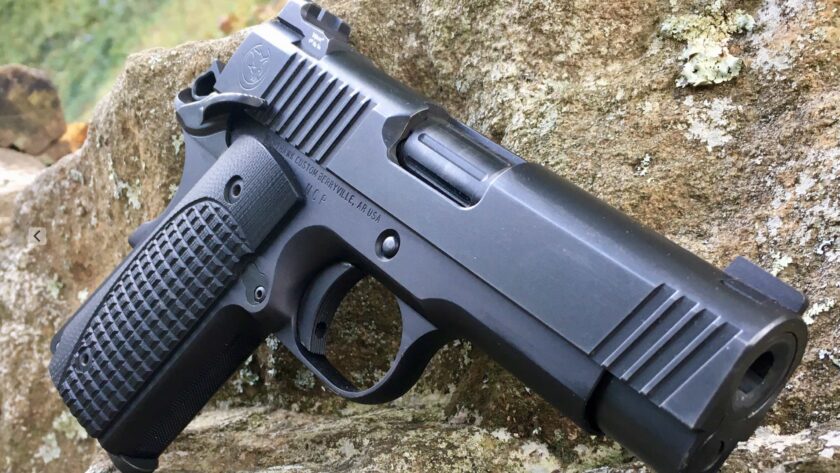The 1911 is not a platform that suffers long periods of inattention gracefully. It has to be cleaned and lubricated at least somewhat regularly in order to keep running efficiently. This is in contrast to a lot of guns that will keep running notwithstanding a dearth of maintenance. Let’s look at cleaning and maintenance of the defensive 1911.
This article contains affiliate links.
Cleaning Defensive Handguns
I don’t really understand the concept of not cleaning your EDC gun. Sure, after a long day at the range, with half a dozen rifles, shotguns, and pistols, after it has been raining – no one wants to come home and spend two hours taking all those guns apart to make sure all those internal parts get cleaned and oiled. But going to the range for a couple hours with my pistol and not finding ten minutes to field strip it, wipe off the big stuff, and squirt some lube in it? I just don’t get it.
Even when I carried a Glock on the job I cleaned it regularly. And why not – my life depended on that Glock working. I wanted to give it the best possible chances of working. So after a range session (which could you usually go for several hundred rounds) I’d break the thing down, knock the crud out of it, and put a little lube on it. I’ve said it before here, and I’ll probably say it again, but your Glock doesn’t run (or run better) because it’s dirty; it runs in spite of being dirty.
Cleaning your 1911 is, in most cases, far less optional than cleaning your Glock or M&P. And, I hate to say it, but this statement becomes more true the more expensive your 1911 is. The tighter the tolerances of your 1911, the more likely it is for a dirty gun to cause you problems. Even if your tolerances aren’t all that tight I still recommend cleaning on a regular basis. If you don’t like cleaning guns the 1911 platform probably isn’t for you.
Today I’m going to talk about cleaning and general maintenance of the 1911 pistol. I’m going to talk about how often to clean, what to clean, and lubrication. I’m going to focus this discussion around what I do and how often as I am a fairly heavy user and every-single-day carrier of a 1911.
Weekly 1911 Cleaning and Maintenance
If I haven’t been to the range that week I will still do a little mild maintenance. Usually this involves nothing more than clearing the weapon and locking the slide to the rear. I will visually inspect the chamber/breach face area for obvious dirt and/or debris. If If any is present I will wipe it down. I may give the gun a little lube if I feel it needs it – usually out toward the end of the barrel and in the slide rails. After closing the slide I’ll spray a tiny bit of lube on the barrel hood. I’ll also use that opportunity to rotate my carry ammo if it needs it.
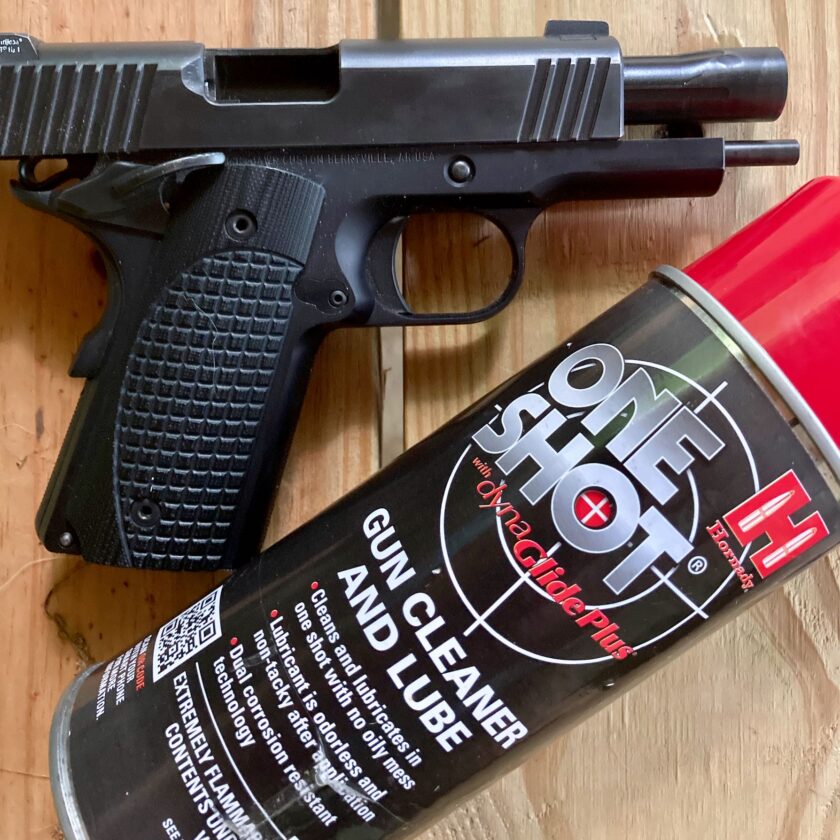
I also give my 1911 a little squirt of lube externally every day that I come home and find moisture condensed on it. The 1911 is still made of metal. Even the most hi-tech finish isn’t improved by salt water, which can seep under the grip panels, behind the thumb safety, into the grip safety and onto the sear spring… As a daily ritual I’ll check my gun once I’m in for the evening and give it a little shot of lube around the thumb safety to displace the water. Pro tip: you should also keep an eye on your spare magazine, too, lest rust should form under the floor plate.
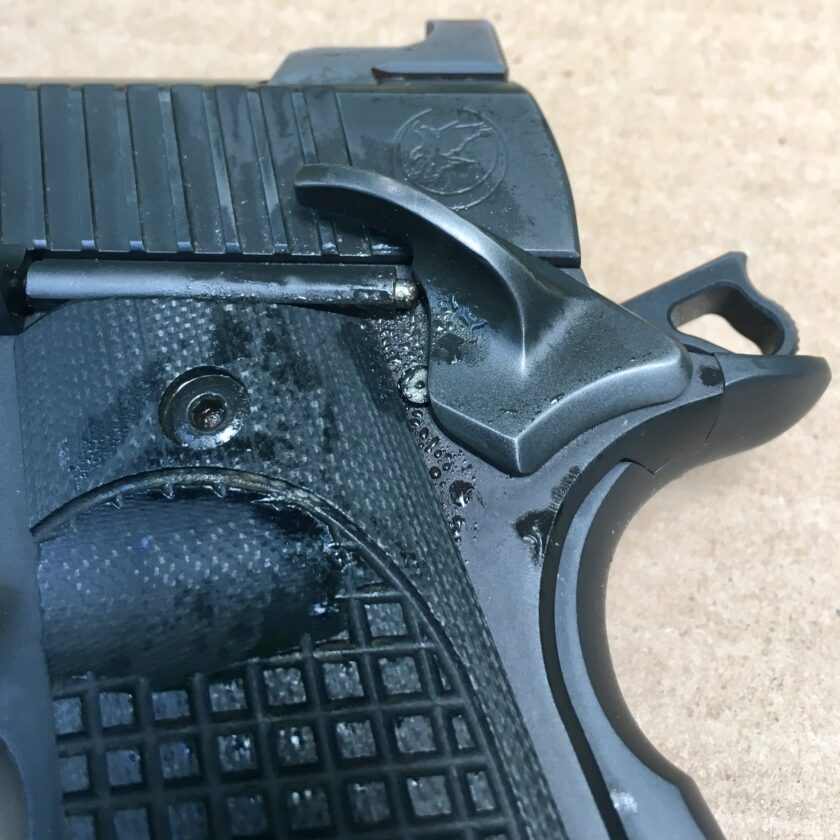
Every Month or After Every Range Session
If you go to the range, clean your gun. If you went to the range and fired one magazine…OK, you probably don’t need to drop everything and clean the gun; you can get by with the minimal inspection/lube described above. But for a typical range session of, let’s say, 50+ rounds, you should probably do a basic cleaning afterward. I don’t think that’s so much to ask for life-support equipment.
There is one caveat to that. I do like to establish that my gun will run at least to a certain point without cleaning, usually about 500 rounds. Generally, after I’ve gotten a couple thousand malfunction-free rounds through the gun I will let the gun go without cleaning until I hit 500 more malfunction-free rounds. I don’t do this to free myself up to go 500 rounds without maintenance; I do it to give myself a high degree of confidence that if I start with a relatively clean gun, it should be able to easily make it through the two mags on my person with no problem.
What To Do: After a range session I like to field-strip my gun. I carefully wipe down the barrel with a soft cloth. Next, I will brush out the important bits of the slide with a nylon brush: the breach face/extractor, the locking lugs, the disconnector rail, and the frame rails. After that I’ll wipe out the slide with a soft cloth and Q-tips. Then I’ll turn my nylon brush toward the frame. I’ll brush off the slide rails really well. Next I’ll hit the inside of the magazine well just to knock out any big stuff, being sure to hold the frame upright so debris falls out the bottom of the magazine well. Next, I’ll do two or three swipes with a bore snake and call it a day before lubricating the gun and putting it back together.
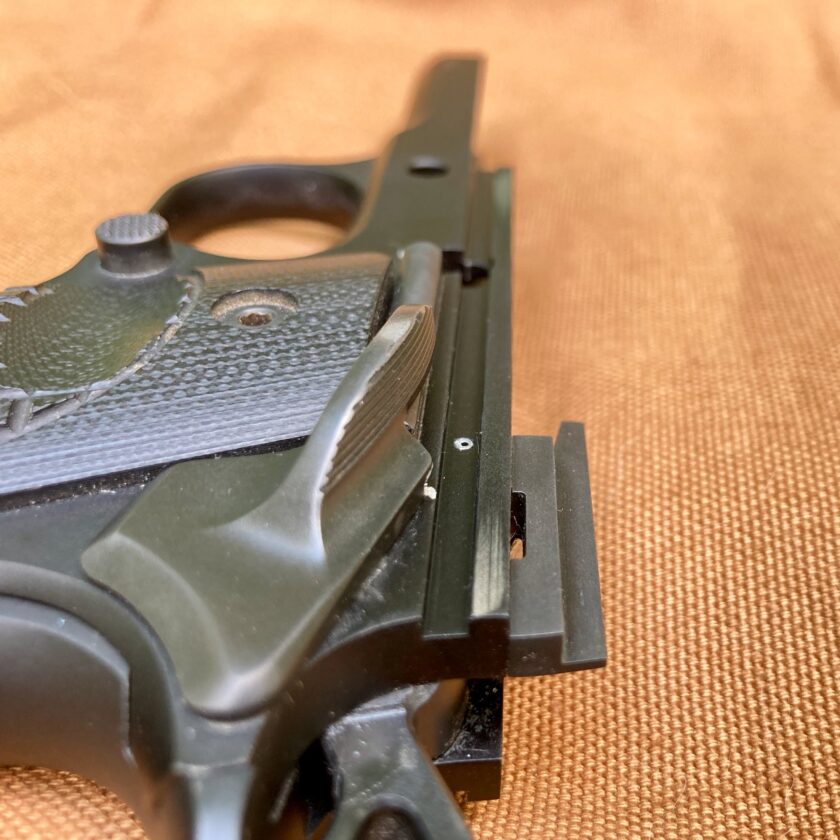
Lubricating the 1911
At this point I’m going to take a brief interlude from my maintenance periodicity and discuss lubricating the 1911. My choice of lube is based on my own experience. I use a lube called Hornady One-Shot. One-Shot is a silicon dry-film lube, meaning it dries on the surface of whatever it is sprayed on. After it dries it leaves behind a film of silicon that provides lubrication, but isn’t wet, greasy, or dirty (OK, it’s a little greasy if you put on a really heavy coat). That means it doesn’t run out of the gun, it does get on my clothing or get flung back in my face when shooting…it’s a very polite but efficient lube. My 1911 is closing in on 3,200 consecutive malfunction-free rounds, all with Hornady One-Shot lube so I’m pretty satisfied with it.
Caveat: There is a lot of emotion wrapped up in how to lubricate a 1911 (and really, anything to do with the 1911) so if you see or hear conflicting advice try it out for yourself and see what works (and my “works” I mean with some sort of objective test that approximates your real-world application.). And if you don’t like my way of doing it you don’t have to be mad at me; I’m not the one lubricating your gun. Do what makes you happy.
Where was I? Oh yeah – where to put the lubricant. Honestly I’m willing to put this dry lube just about anywhere since it dries really quickly. But let’s talk about the important bits that really rely on something to reduce the friction of hard, metal-on-metal contact. There are three key places on the slide that I lubricate. They are the locking lugs, the frame rails, and the disconnector rail. You can put lube all inside the forward part of the slide if you really want to, but those three areas are critical to reducing friction and keeping the gun running smoothly.
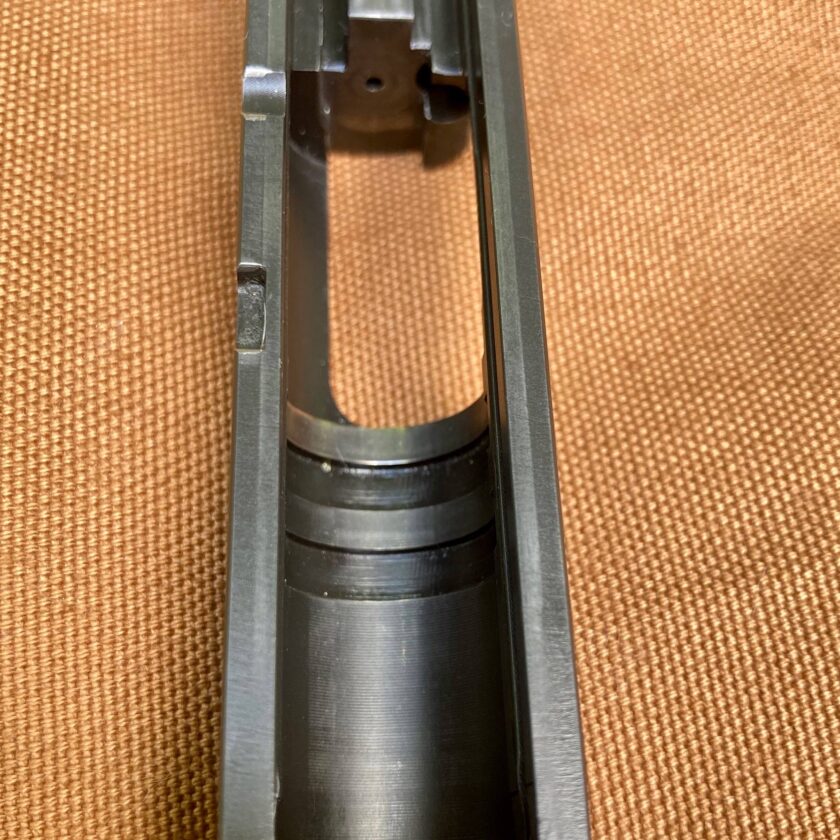
On the frame I make sure I hit the slide rails. Also commonly overlooked is the disconnector – that silver thing poking up in front of the hammer. I learned this from reading something Bill Wilson wrote. The disconnector rides against a rail (the disconnector rail) in the slide. If it is not lubricated it can create significant friction that can slow the action. It can also cause premature wear, so keep it, and the rail it rides on (the disconnector rail in the slide) lubricated.
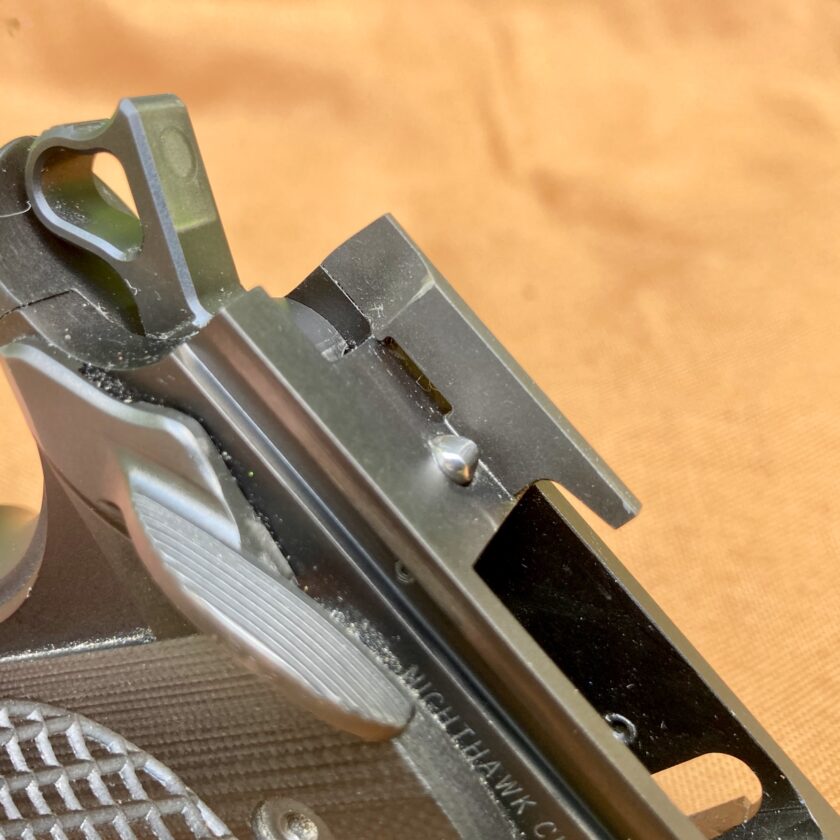
Finally there’s the barrel. I will make sure to get some lube on the barrel link and its lug.
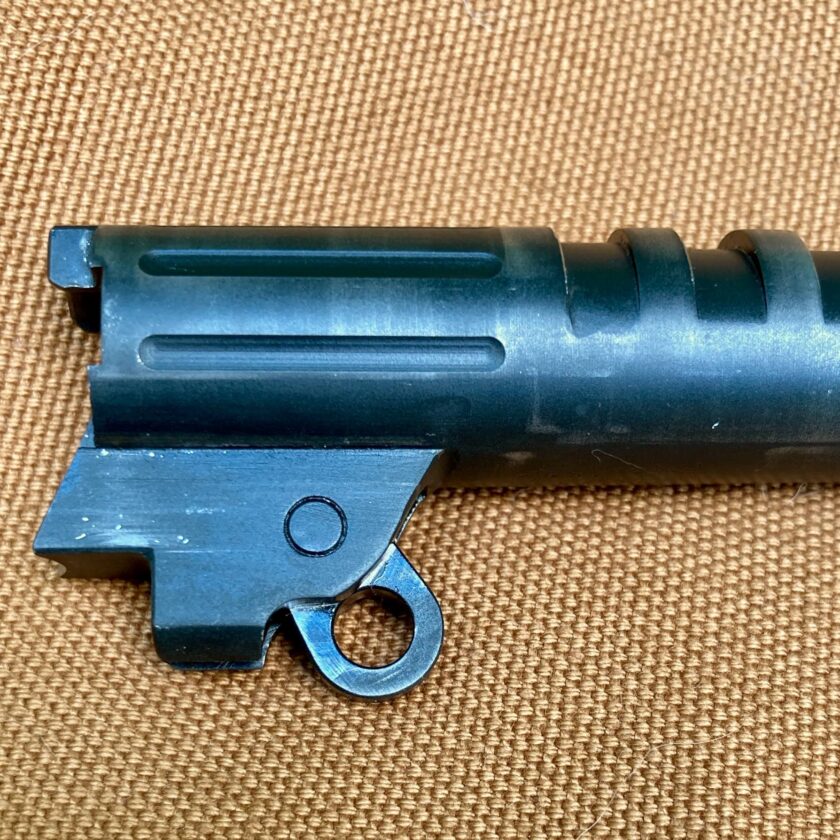
Next, I’ll hit the top of the barrel and make sure the shiny parts are lubed. Usually this is the locking lugs and some distal portion of the barrel where it interacts with the frame or bushing. If your 1911 has a bushing, make sure to get a little lubricant on the inside diameter of the bushing, as well.
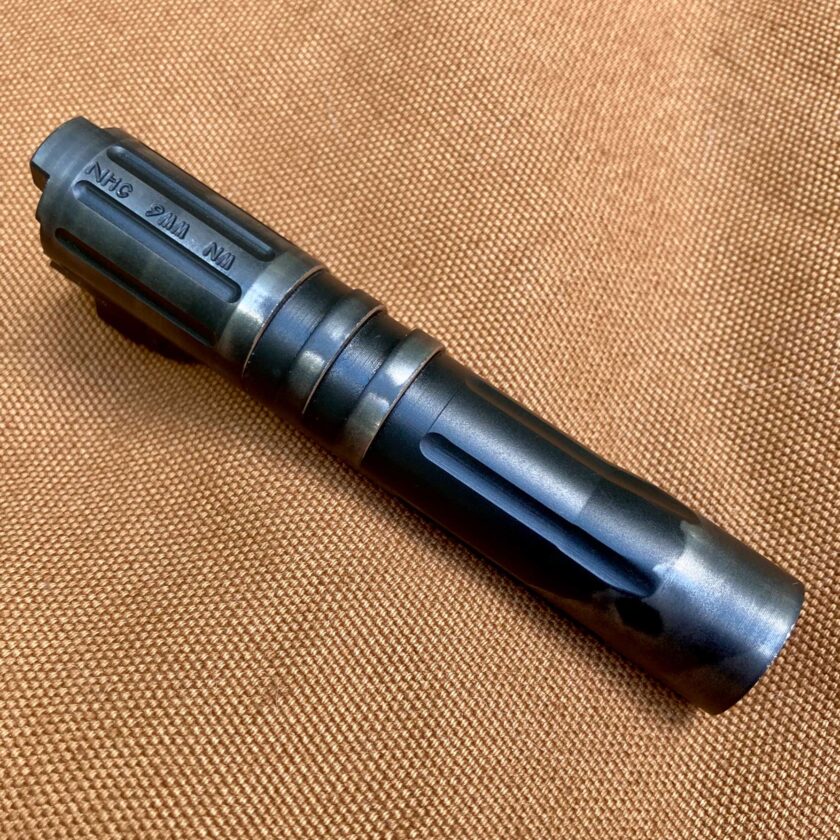
Finally, I’ll make sure the captive spring and guide rod are lubricated up. This is just a squirt of lube on the whole assembly. Usually during my weekly lube-jobs I’ll lock the slide to the rear, then spray a little lube on the guide rod and let it run into the gun. This probably isn’t as good as disassembling the whole thing, but for a quick intervention it’ll do.
Oh, and one more thing: this is also a great time to pop off the grip panels. If you carry your 1911 close to the body and without a sweat guard, it is really easy for sweat to find its way between the grip frame and panels. When it dries it leaves behind corrosive salt. Make sure this area is cleaned occasionally or you’ll end up with rust and pitting (like I have on my favorite S&W J-Frame revolver for the same reason).
For an even better (and certainly better illustrated) article about lubricating the 1911, check this out. I don’t agree with their choice of lube and be advised – it is an article by a lubricant company – but the illustrations are outstanding. OK, with where and how to lubricate out of the way, let’s jump back to regularly-scheduled programming.
Every Quarter or after 750-ish rounds
There is one additional thing I do after every 1,000 rounds or so: I remove the firing pin and extractor. I clean them and the channels they live in. Most importantly I do this because carbon can build up in the 1911’s extractor channel. This can place pressure on the extractor and limit range of motion, leading to extractor failure or breakage. Since I’ve got the firing pin out anyway, I go ahead and clean it and its channel, too, even though it’s rarely gunked up enough to really need a cleaning.
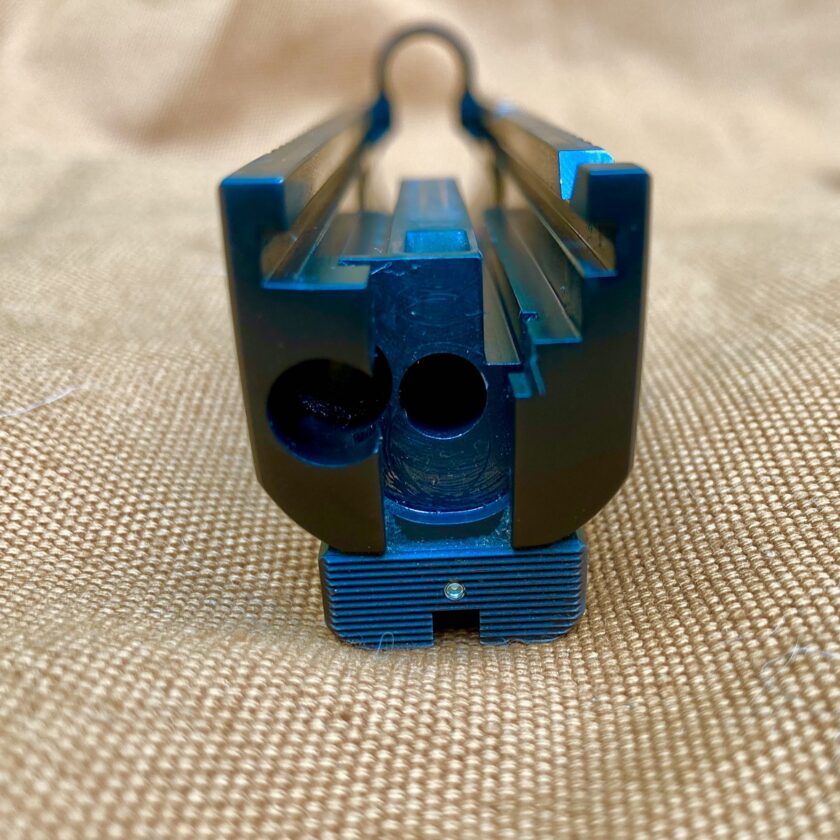
Around this timeframe I’ll also go ahead and disassemble my spring/guide rod assembly, as well. It doesn’t seem to accumulate that much gunk, either, but it can be a significant source of friction. Agood wipe-down every now and then doesn’t hurt.
Every Year or 2,500 Rounds
Roughly every 2,500 rounds (OK, in my case, almost exactly) every 2,500 rounds or every year (whichever comes first) I do detailed 1911 cleaning and maintenance. This includes fully disassembling the gun and cleaning each part. I also swap out my recoil spring. On my particular model Nighthawk recommends changing it every 7,500 rounds. Since I dry practice probably 50 “rounds” to every one I shoot, and because racking in dry practice inflicts wear and tear, I change it more often than the recommended live-round interval.
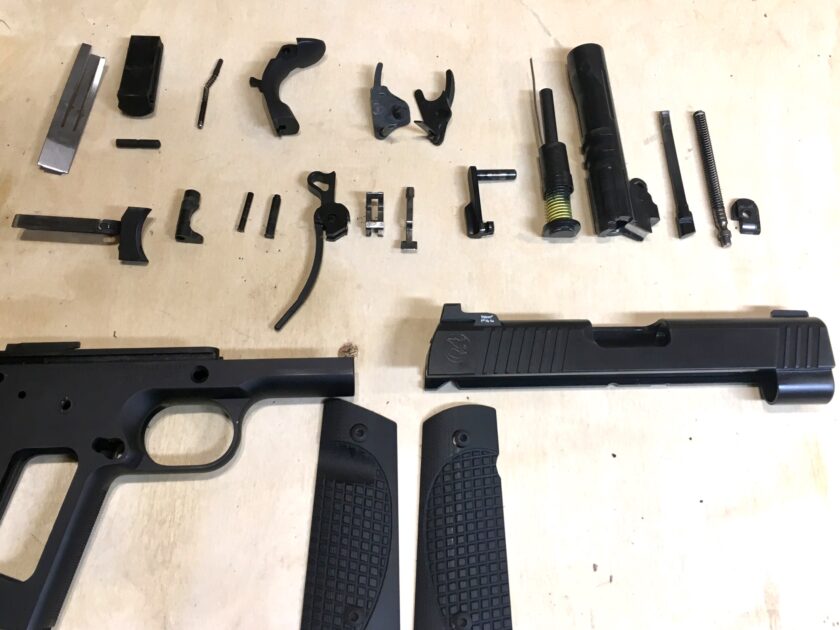
While I’m at it, I completely disassemble the gun and detail clean everything. I don’t do this more than every 2,500 rounds because taking it apart too frequently can be suboptimal, as well. Apparently this can loosen the fitment between the two halves of the safety. In any case, it’s worth doing on some periodicity because a lot of grit and grime builds up in places that don’t regularly get cleaned.
This is also an excellent opportunity to inspect everything. You may notice that some internal parts, like your sear spring, for instance, exhibit a little rust. That might indicate taking the gun down for a detailed cleaning a little more often. I wipe everything down and brush off what I need to with a nylon brush. I then coat everything in a nice coat of One-Shot. After the One-Shot dries I reassemble the gun and know she’s good to go for another 2,500 rounds.
If you don’t know how to disassemble your 1911 it’s definitely with checking out this video BEFORE you begin… and keeping it handy during the process.
Wrap Up
Now, that probably seems like a lot of stuff. But let me simplify the schedule just a bit for you:
- Inspect it and maybe throw a little lube on at the end of every week.
- Field strip and clean/lube after every range session or every month, whichever comes first.
- Clean out the extractor channel every 750-1,000 rounds or every 3 months, whichever comes first.
- Detail strip the gun every 2,500 rounds or yearly, whichever comes first.
It really doesn’t look like more than I would do with any carry pistol.
The 1911 gets a lot of flack and I get it – it’s certainly dated. There are many, many options that are massively better (at least on paper). But to say the 1911 isn’t worthy of consideration is – I’ll say it, even at the risk of sounding like a 1911 apologist – just wrong. Maintained correctly it works and works and works. I wouldn’t recommend anyone go out a buy a 1911 as their carry pistol. But if you already own one, got one handed down to you, or (as in my case) have a huge body of training and experience with one, don’t despair.
Stay tuned for more info on the 1911!
